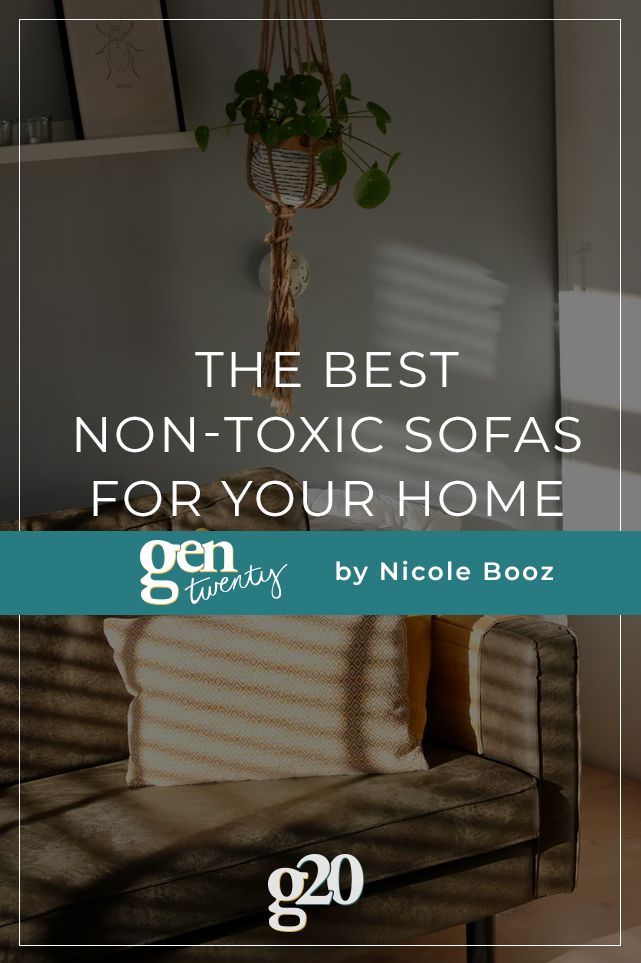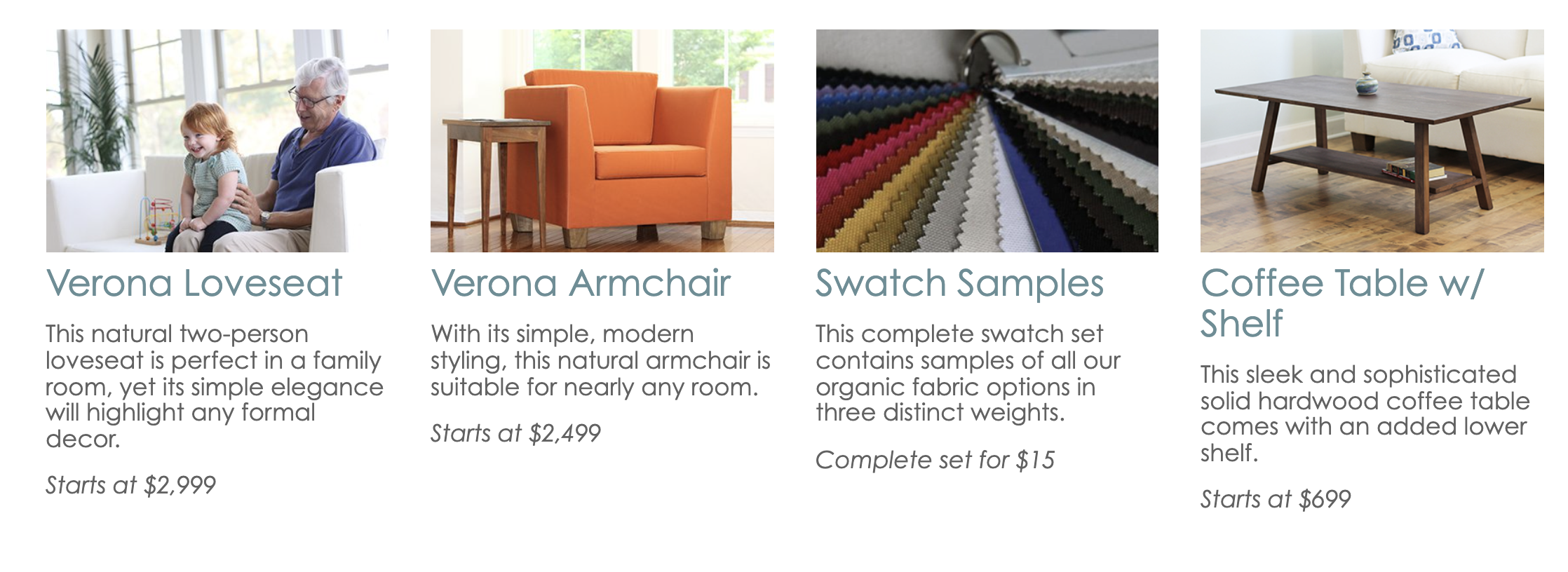Even in small spaces, sofas are the site of many activities, whether you’re just watching television, having coffee with friends, or taking a quick nap. Which means we come into contact with your sofa regularly and the last thing you’d want a favorite spot to be is a toxic one. But unfortunately, along with other household furniture and accessories, your sofa could be harboring toxins.
What are the Toxic Components Used in Sofas?
Toxins are introduced into furniture during the manufacturing process. Once in your home, these toxins – known as volatile organic compounds (VOCs) – are usually emitted into the air and dust in your home.
They can impact you by affecting indoor air quality. Children are even more vulnerable as they crawl across floors and carpets and place fingers and toys in their mouths.
One of the most common toxin used in sofas is fire or flame retardant. In 1975, Technical Bulletin 117 (TB117) was introduced in California, requiring furniture manufacturers to treat products with fire retardants to prevent fires caused by cigarettes.
The practice soon swept the nation, as manufacturers in the furniture industry did not want to have to create two product lines in the United States. The problem with flame retardants is that they contain toxic chemicals that have been linked to cancer and neurological disorders.
One of the most commonly used flame retardant chemicals was polybrominated diphenyl ethers (PBDEs). Exposure to or ingestion of PBDEs may lead to diabetes, liver problems, thyroid disease, or negative effects on the nervous, immune, and reproductive systems.
Triphenyl phosphate (TPHP or TPP) and hexabromocyclododecane (HBCD) are also common flame retardants with negative health effects. Flame retardants may have been introduced to slow the spread of fire, but they do not necessarily prevent it and the resultant chemical exposure could be more toxic.
Flame retardants and other toxins can be found in the foam or fabric of sofas, but can also be found in glues and glosses. Other toxins that may be present include formaldehyde, benzene, perfluorooctanoic acid (PFOA), and phthalates.
As sofas break down from use, it can increase the release of toxins. Many toxins bioaccumulate, building up in your body over time so the best thing you can do is to prevent exposure to toxins and minimize cancer risk.

What to Avoid When Buying a Sofa
The regulation enforcing the use of flame retardants was recently updated (to TB117-2013), requiring fewer flame retardants in furniture. Some flame retardants can be safer but the ones to avoid are brominated flame retardants. If you’d rather have a sofa without a flame retardant, look for “flame retardant free” labels.
A few more things to keep in mind when looking for a safer sofa include:
- Be cautious of anti-microbial, stain-, and water-repelling treatments. The chemicals used in these treatments do not break down and can also have negative health effects.
- Avoid vintage furniture, as it may contain lead or heavy metals.
- Choose other options besides permanent press fabrics, as these contain formaldehyde, a known carcinogen.
- Avoid sofas with chemical smells, as this can be an indication of the presence of volatile organic compounds.
- Avoid polyurethane foam, as it is highly flammable and requires flame retardants.
What to Look for in a Non-Toxic Sofa
It can be difficult to determine how much contact and exposure to chemicals in your sofa may be harmful, so if you are concerned and want to try mitigating potential effects the best way to keep you and your family healthy is to try looking for non-toxic sofas instead.
Here are a few things to remember when buying a non-toxic sofa:
- Ask questions – chat with the customer service of a company to get the exact materials they use.
- Check labels – read the fine print.
- Choose natural fibers and organic fabrics -with cushion fills like natural latex, cotton, wool, jute, and kapok and other organic materials. Some synthetic materials are made with toxic materials.
- Look for recycled or upcycled materials – particularly when it comes to synthetics.
- If you want leather sofas, stick to eco-leather – it avoids the use of toxic dyes and treatments. If you don’t want real leather, avoid synthetic leather made from plastic and rather go for options made from cork, mushrooms, or pineapples.
- Choose a solid wood frame – not pressed particle board.
- Seek finishes made with low or zero VOC emissions – like linseed, walnut, or hemp oil.
- Be smart – if want to replace a sofa, but are on a budget, look at replacing the foam of the seat cushions.
Feeling stressed? Don’t worry, the good news is that non-toxic sofas are increasingly available, so if you’re on the hunt for one, here are a few brands you can check out.
The Best Non-Toxic Sofas For Your Home
Sabai
Offering beautiful, sustainable furniture, Sabai is passionate about protecting the environment. Made in High Point, North Carolina, Sabai specializes in sofas. The cushions are made from CertiPUR-US®-certified foam that contains no flame retardants or formaldehyde.
Their recycled velvet and upcycled poly fabrics are untreated, frames are built from FSC-certified wood, using a low VOC stain, and they do not make use of glues. If you think a lot about your carbon footprint, these sofas may be for you!
The Essential Sofa from Sabai is a more affordable non-toxic sofa option, clocking in at about $1,300 with 8 fabric options and 2 wood options to choose from.
Save $50 on your Sabai purchase with code GENTWENTY50.

Burrow
Both functional and stylish, Burrow offers luxury sofas separated into modules that are easy to assemble and easy to move. They’re also made to expand, allowing you to adjust the length of your sofa or add accessories like shelving units.
Using durable materials, their high quality products are made to last. The sofas’ stain- and scratch-resistant surfaces are made with upcycled, synthetic fibers that contain no chemical coatings or treatments.
Burrow has a significant number of sofa and sections options (the most of any on this list). They also have some more affordable options starting at in the $1,300 range.

Ecobalanza
Based in Seattle, Ecobalanza handmakes organic sofas according to your specifications. A purpose-driven company, their goal is to make sustainable sofas that are, ethical, and non-toxic. Focusing on clean and responsible materials and manufacturing methods, Ecobalanza makes use of natural materials like hemp twine, jute webbing, certified organic latex and cotton, and kapok.
The sofas contain no chemical flame retardants and use zero-VOC wood stains and finishes, while FSC-certified hardwood frames replace formaldehyde-treated pressboard and plywood.
Ecoblanza is made-to-order specially designed company. You pay a 50% deposit on your furniture before they even order any materials.

Joybird
Creating handcrafted furniture that is custom-made and curated, Joybird offers many choices for your living room and even the outdoors. They offer sofas made with densely-woven fabrics that contain no flame retardants or harmful chemicals and are made with water-based, low VOC glues, and stains.
Not all of Joybird’s sofas are non-toxic. I emailed Joybird’s customer service for clarification on their sofas. Here is what they had to say:
The good news is, we do not use any chemical flame retardants in our foam or fabric at all. We conform with California’s TB 117-2013, which essentially states that foam does not need to have flame-retardant chemicals injected in them anymore.
None of our fabrics have flame retardants in them either and they are certified to be free of toxic gases. Having said this, you should know that all foams are manufactured with the use of chemicals and woods have their own natural glues in them. Most synthetic fabrics are made using chemicals and even the wood stains we use have chemicals in them. The manufacturers we work with, who provide these items have had them tested to be free of any toxic substances and we do our best to partner with companies that can meet those standards.
The second concern many people have is with VOCs or off-gassing. Most substances on the planet, with the exception of some metals will off-gas. The concern is with what they are off-gassing. While our furniture will off-gas, what they are off-gassing is non-toxic, low VOC, and formaldehyde-free. We strive to produce the healthiest furniture we possibly can at a price point that’s affordable to the majority of consumers looking for a new sofa, sectional, or chair.
We do our very best to build “healthy” furniture – including using water-based glues and sustainable wood sources. You can read more about our commitment to sustainability here, https://joybird.com/giving-
back/ I also wanted to share that we do have some fabric options that are OKEL-TEX certified. OKEO-TEX is independent testing for harmful substances according to OEKO-TEX® Standard 100 for textile products of all types. These tests certify that the Key Largo line of fabrics is free of all harmful chemicals and carcinogens, these fabrics are manufactured using non-harsh/non-toxic chemicals.
So while Joybird is not strictly non-toxic in my opinion, I do think that they are still a decent option. They run frequent sales and have the most fabric and style options of any brand on this list.

Maiden Home
Produced in North Carolina, Maiden Home’s furniture is handcrafted by local artisans. Their furniture, including sofas, is made without flame retardants or formaldehyde.
The soy-based foam in the cushions contains no ozone depleters, PBDEs, TDCPP, or TCEP flame retardants, mercury, lead, or formaldehyde. Wood pieces and frames are made using responsibly sourced hardwoods, springs are made of recycled steel, and whenever possible water-based, low-VOC glues and stains are used.
Maiden Home has 9 available sofa options ranging in price from approximately $2,200 to $3,800.

Medley Home
Handcrafted in California, Medley Home’s sofas offer comfortable support, featuring locally-sourced, hardwood frames; and when it comes to fabric, filling, wood, and size, the choice is yours.
Medley Home uses no harsh chemicals or flame retardants and the materials they rely on include organic cotton certified by the Global Organic Textile Standard and OEKO-TEX® Standard 100 wool, with cushions made using CertiPUR-US®-certified foam or certified organic natural Dunlop latex.
Medley home has 12 different sofa options (one of the most of any on this list). They range in price from about $1,800 – $2,200.

Savvy Rest
Specializing in organic bedding and sofas, Savvy Rest furniture is made in Virginia. Their sofas are made using solid hardwood, organic hemp and cotton fabrics, jute webbing, and pure natural latex foam. They contain no flame retardants, formaldehyde, glues, particleboard, plywood, or polyester and their finishes are zero-VOC.
They have two different sofa options available that come in variety of finishes and fabrics.
 In Summary
In Summary
Maybe you’ve never thought so critically about a piece of furniture before. Or maybe you’ve been on a non-toxic kick for a while and have been looking for a more friendly sofa and other non-toxic furniture. I hope this list has been helpful in narrowing down the best non-toxic sofas for your home.
As a final tip, no matter what kind of sofa you buy, if you can let it air out for a few days before putting it inside your home this can help reduce the initial VOC off-gassing that happens with many products.
Everyone’s style and color palettes are so different, it can be hard to find non-toxic option in just what we’re looking for. If this post was helpful, I’d love if you check out our other non-toxic living guides, linked below, too!
More non-toxic living guides to read:
- 19 Affordable Non-Toxic Makeup Brands You Have To Try
- 15 Affordable Non-Toxic Skin Care Brands
- The Best Non-Toxic Dinnerware for Healthy Eating
- The Best Non-Toxic Cookware For Healthy Eating
- Best Non-Toxic Facial Moisturizer For All Skin Types
- The Best Non-Toxic Candles
- 25 Non Toxic Indoor Plants: Safe For Pets and Kids

 In Summary
In Summary